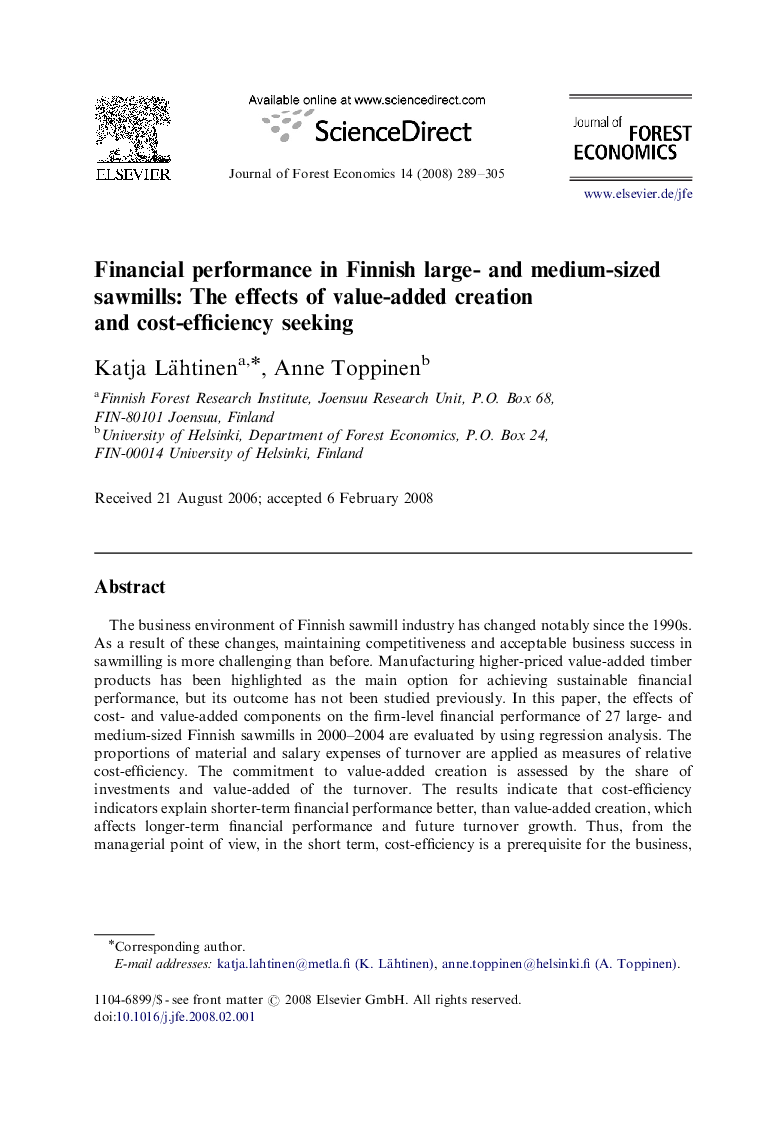| Article ID | Journal | Published Year | Pages | File Type |
|---|---|---|---|---|
| 92191 | Journal of Forest Economics | 2008 | 17 Pages |
The business environment of Finnish sawmill industry has changed notably since the 1990s. As a result of these changes, maintaining competitiveness and acceptable business success in sawmilling is more challenging than before. Manufacturing higher-priced value-added timber products has been highlighted as the main option for achieving sustainable financial performance, but its outcome has not been studied previously. In this paper, the effects of cost- and value-added components on the firm-level financial performance of 27 large- and medium-sized Finnish sawmills in 2000–2004 are evaluated by using regression analysis. The proportions of material and salary expenses of turnover are applied as measures of relative cost-efficiency. The commitment to value-added creation is assessed by the share of investments and value-added of the turnover. The results indicate that cost-efficiency indicators explain shorter-term financial performance better, than value-added creation, which affects longer-term financial performance and future turnover growth. Thus, from the managerial point of view, in the short term, cost-efficiency is a prerequisite for the business, while in the long term, value-added creation is also needed to support the economic sustainability of the business.
